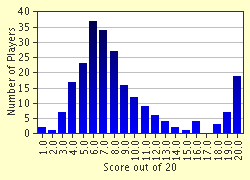Quiz Answer Key and Fun Facts
1. Easy one to start: Where does an otter live?
2. There are 6 reptiles native to Britain: adder, grass snake, slow worm, common lizard, sand lizard, and...
3. Which of the following is NOT a member of the crow family?
4. Which wild plant is also known as 'Jack by the hedge'?
5. What is the Latin name of the ash tree?
6. Which of the following is NOT a moth?
7. In which months do common toads usually migrate?
8. Which of the following deer species is native to Britain?
9. What was the year of the Wildlife and Countryside Act?
10. As a fully grown adult, which of these birds of prey is the smallest?
11. The plant Urtica dioica is better known as...
12. Which native tree is also known as 'Gean'?
13. The EU Habitats Directive is intended to safeguard wildlife sites by designating them as...
14. Stag beetles can fly.
15. Which of the following is NOT a fungus?
16. It has recently been discovered that there are two species of pipistrelle bat in Britain. What distinguishes them?
17. Only the queen bumble bee survives the winter.
18. Which of these orchids has little or no chlorophyll?
19. What is an oak apple?
20. The green woodpecker's call is known as a...
Source: Author
willuk100
This quiz was reviewed by FunTrivia editor
crisw before going online.
Any errors found in FunTrivia content are routinely corrected through our feedback system.

